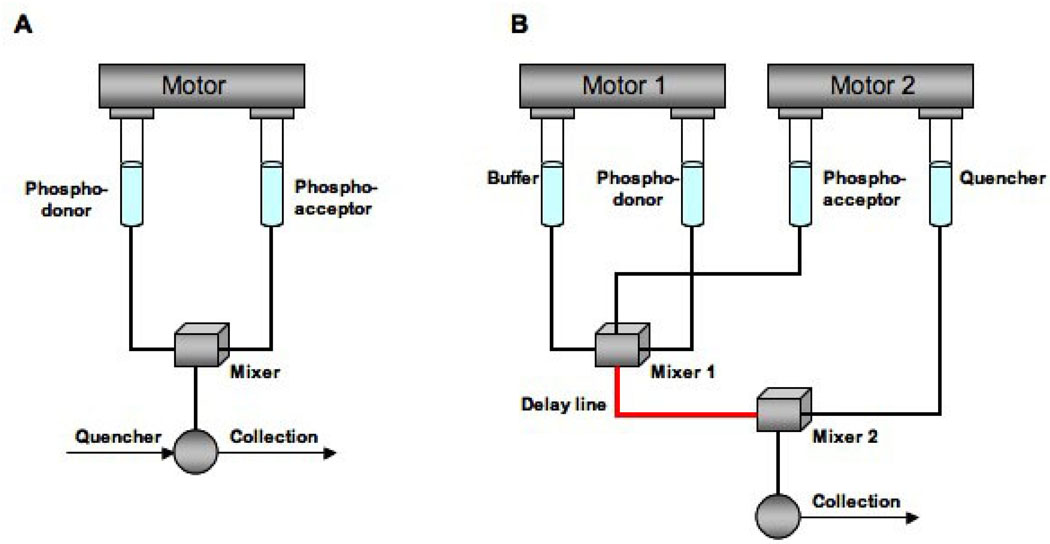Figure 1.
A) Continuous or rapid quench flow apparatus with a single drive mode. By activation of the drive, phospho-donor and phospho-acceptor are mixed in the mixing chamber. The reaction mixture is aged. The age of the reaction mixture corresponds to t=V/S where V is the volume of the capillary and S is the rate of the flow of the reaction mixture down the capillary tube. The value of t can be controlled by varying V and S which is in the range of 30–300 ms. The reaction mixture is quenched upon sample collection. B) Time-delay mode for the quench flow device. In this case, there are two drives. One is for the buffer and phospho-donor and the second one is for the phospho-acceptor and quencher. By activation of the first drive, phospho-donor and buffer are mixed in the first mixing chamber. Activation of the second drive fills the mixing chamber with phospho-acceptor. The reaction mixture is driven in the delay line and stays there for a certain amount of time. After a specific time-delay, the reaction mixture is expelled from the delay line into a second mixing chamber where it is quenched by the injected quencher and collected for analysis. For this method, the reaction time is in the range of 150 ms to minutes and the reaction mixture is less than 50 µL (Figure adapted from Barman et al, 2006).

